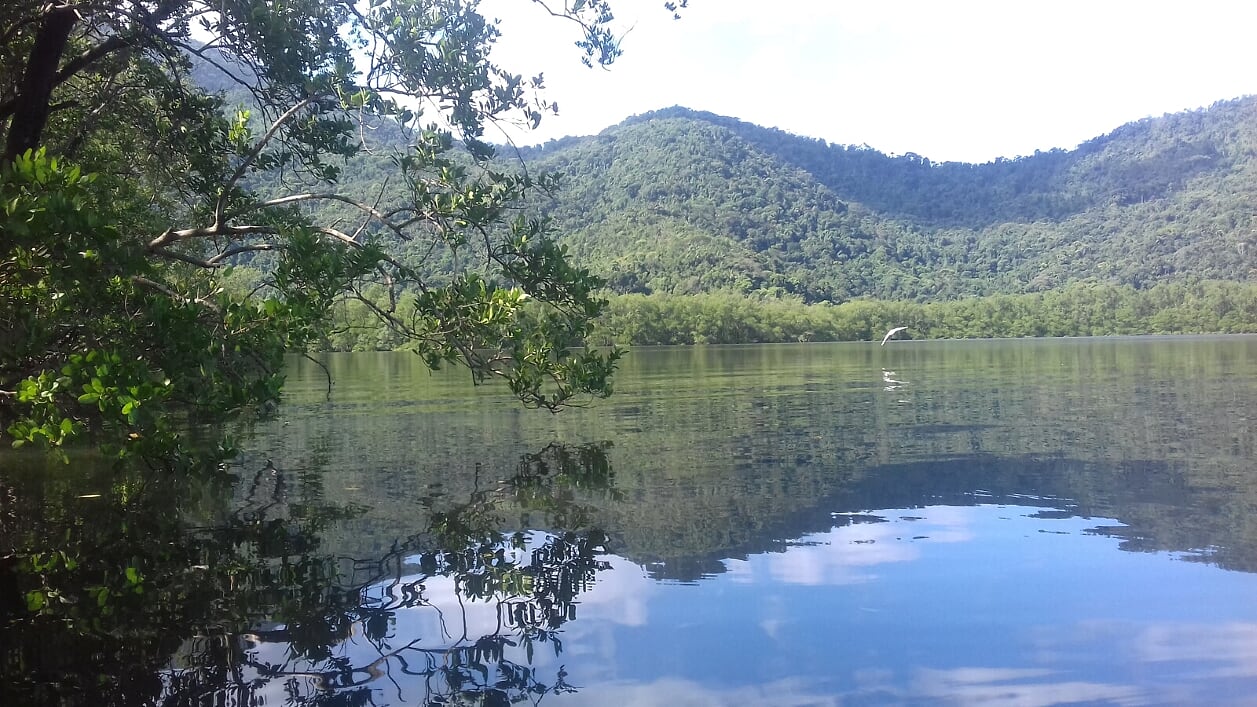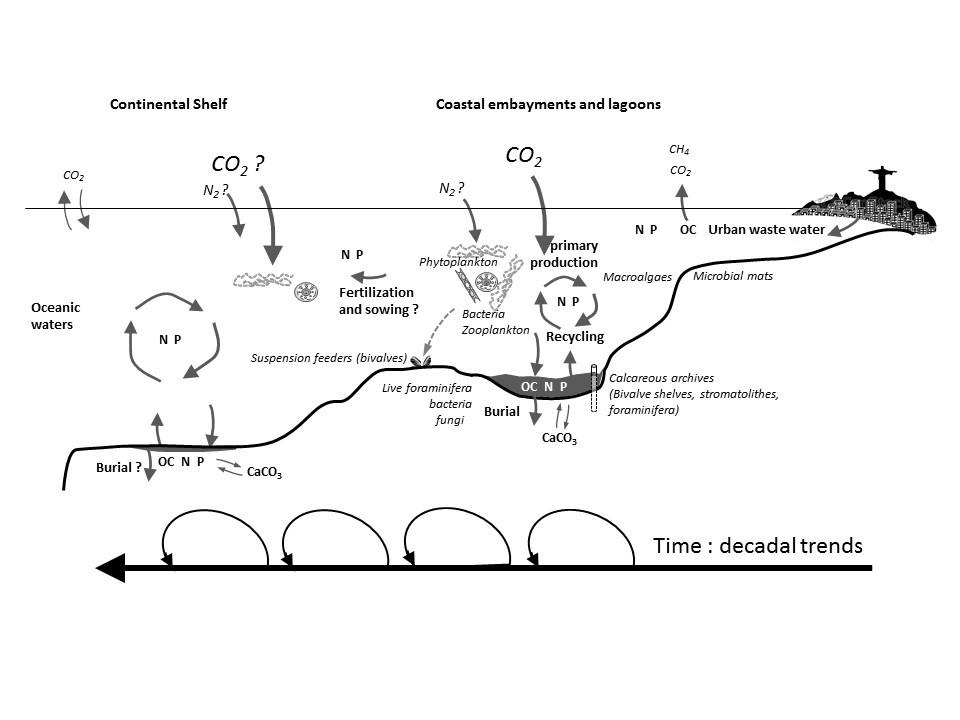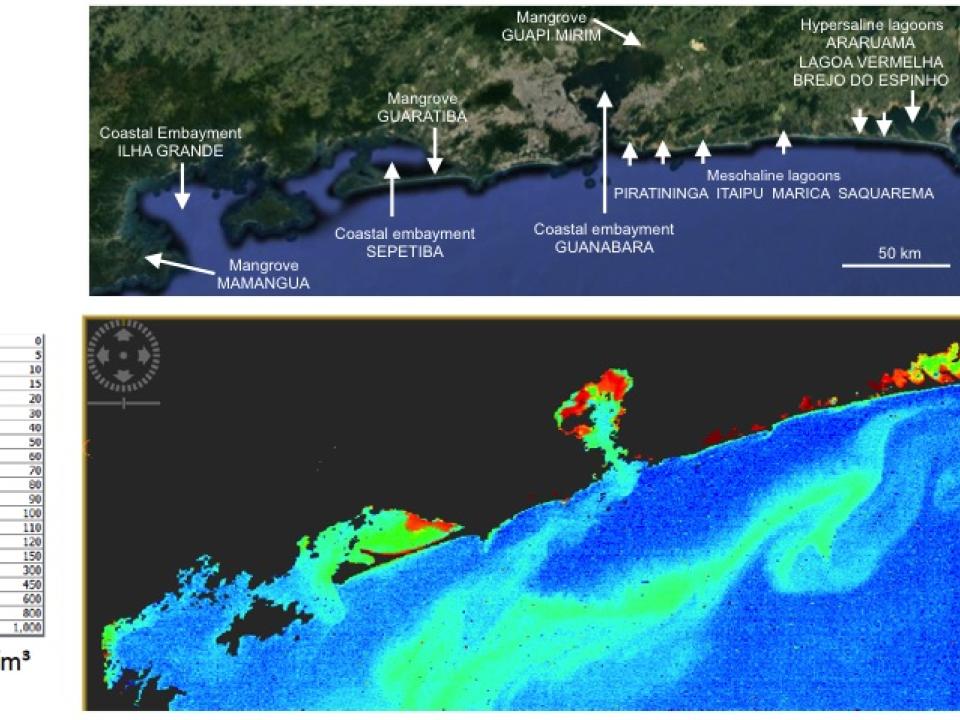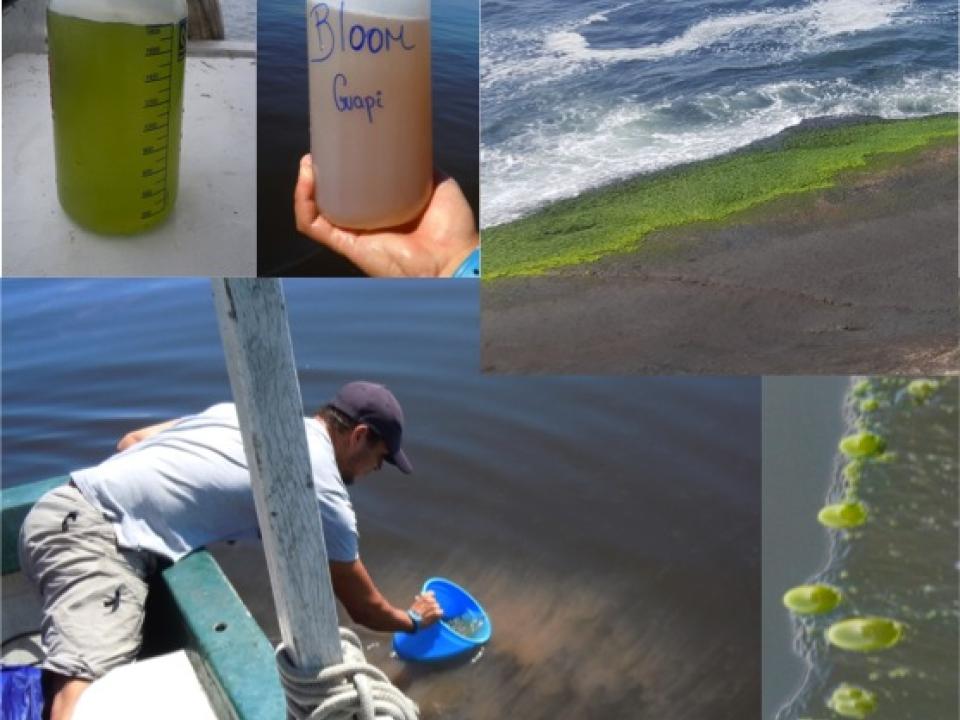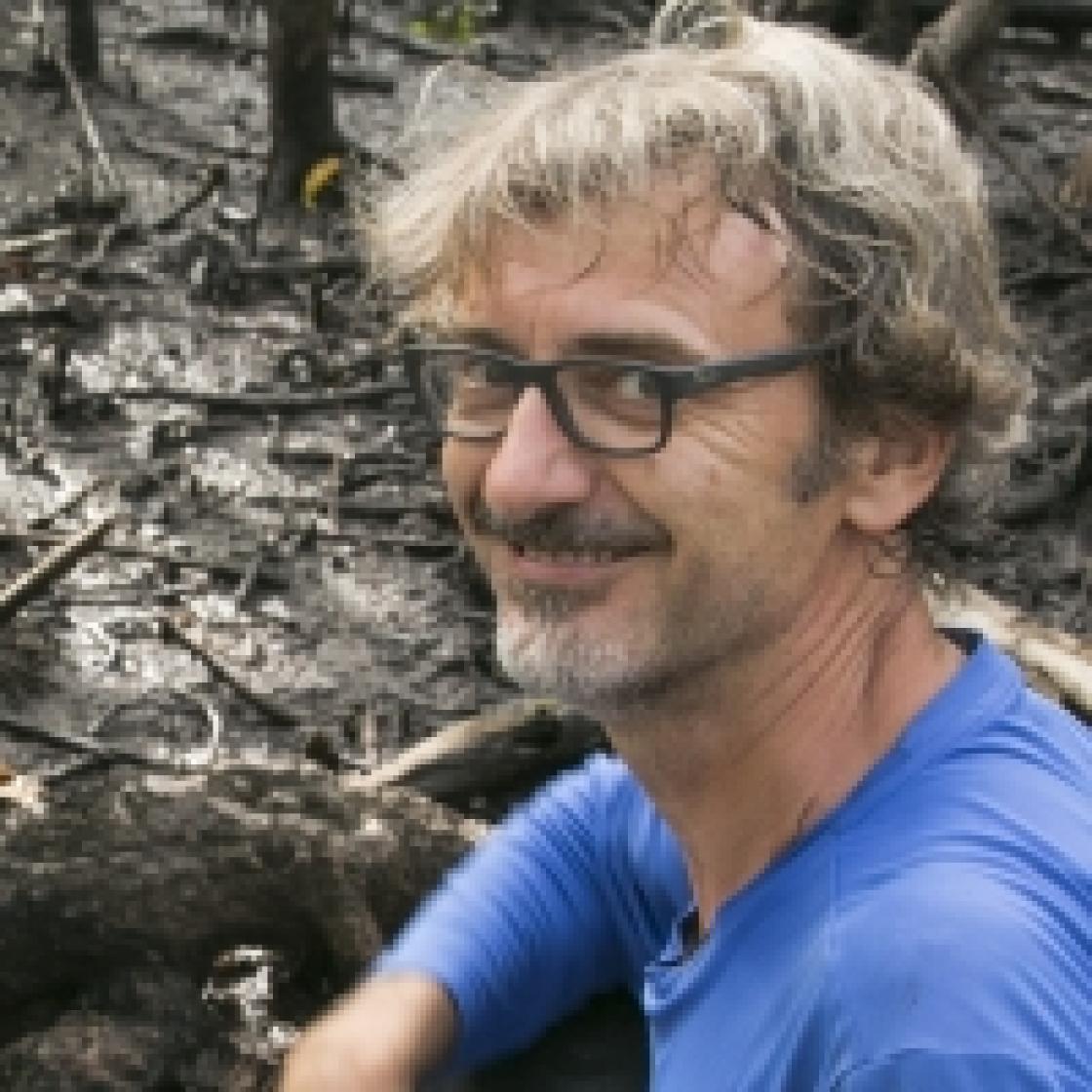The CNRS-INEE International Research Project VELITROP is devoted to the study of biological and geochemical mechanisms associated to eutrophication of the littoral in tropical countries, through multidisciplinary approaches.
The littoral of the stated of Rio de Janeiro, where the geomorphology, hydrography, and anthropogenic pressure present a large diversity commonly found in tropical regions (Latin America, Africa, Asia), is used a main study site. Indeed, typical tropical littoral ecosystems such as semi-enclosed bays, estuaries, meso-saline and hyper-saline lagoons, mangroves and the continental shelf are distributed along a clear eutrophication gradient observable from satellites, from the urban area of Rio de Janeiro to the preserved region of the Costa Verde.
The IRP VELITROP is structured in three research topics: (1) Spreading of eutrophication at the land-sea interface; (2) Vulnerability of blue carbon in mangrove soils; (3) Microbiology, carbonate chemistry and biocalcification in hypersaline lagoons.
Partnership is organised in Franco-Brazilian small groups of 3-4 researchers that share scientific topics and/or analytical tools.
Finally, the IRP VELITROP will organize awareness actions with local communities, principally young people from deprived urban areas and littoral users from suburban areas (fishermen); thanks to a well-established actor network (nautical clubs, fishermen associations, conservation institutes and natural parks), the IRP organizes thematic meetings on the question of ocean preservation and calls for participatory science in order to acquire high resolution sampling useful for his researchers. MORE
BOREA Contact: Gwenaël Abril
